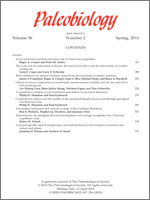Recent studies have provided detailed insight into life cycles of early amphibians. These ontogenies were diverse and their evolution involved numerous kinds of change, which can now be addressed by comparison of ontogenetic trajectories. The plesiomorphic trajectory included (1) an early period in which a larval, aquatic predator was established, (2) an intermediate period in which the axial skeleton was strengthened, and (3) a final period during which the jaw joint, braincase, and limbs were ossified, producing an adult capable of terrestrial locomotion if completed. Heterochrony, among other factors, enabled the fine-tuning of the ontogenetic formation of ecologically important features (feeding, respiration, locomotion). Most common was a simple truncation of the trajectory that produced aquatic taxa of various kinds, while changes in the ontogenetic sequence often had a deeper impact on morphology. The most fundamental changes were accompanied by multiple heterochronies, resulting in the condensation or unpacking (stretch-out) of developmental events: metamorphosis evolved by an ever closer packing, whereas a novel larval feeding mechanism was established by a pull-apart of numerous critical events.
How to translate text using browser tools
1 March 2010
Heterochrony: the interplay between development and ecology exemplified by a Paleozoic amphibian clade
Rainer Schoch
ACCESS THE FULL ARTICLE

Paleobiology
Vol. 36 • No. 2
March 2010
Vol. 36 • No. 2
March 2010




